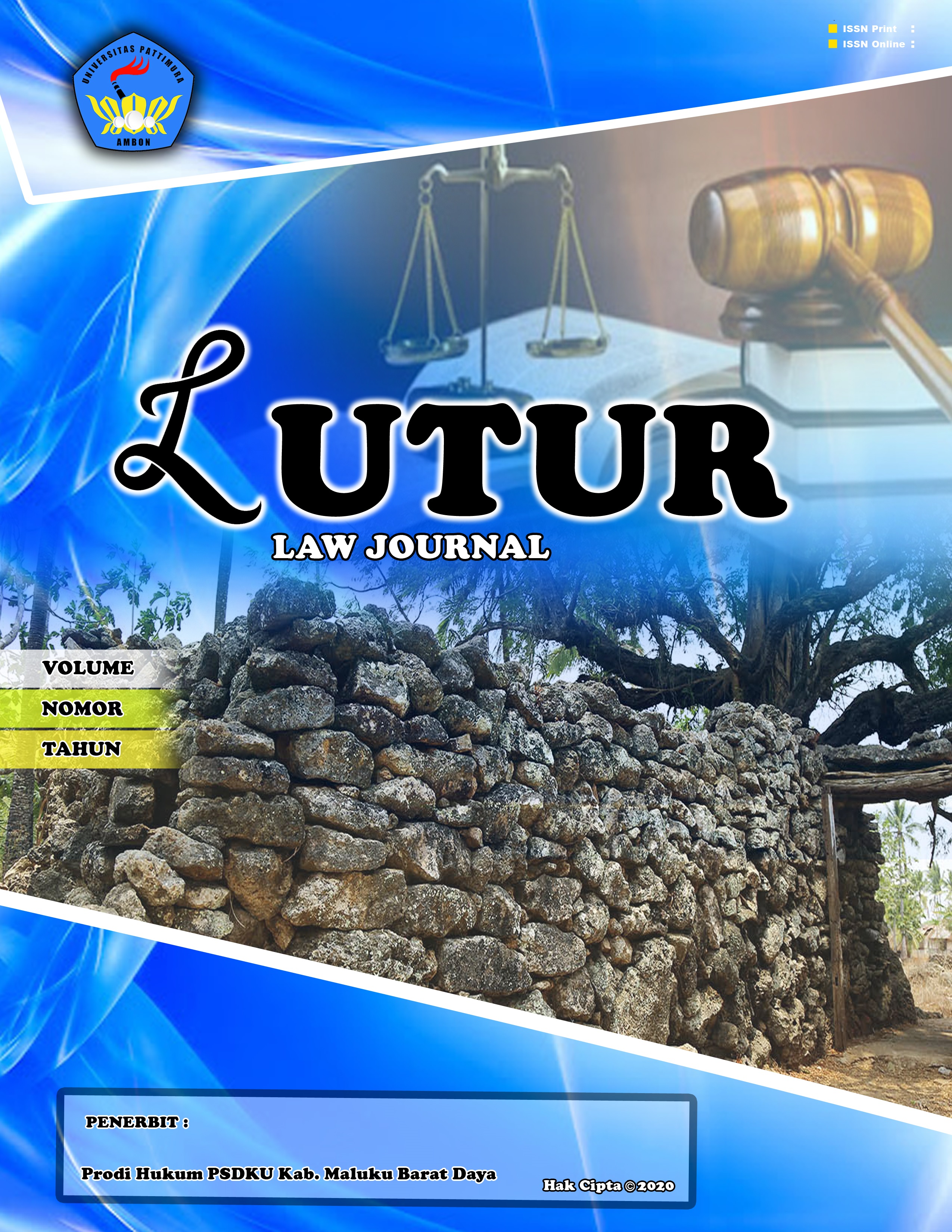Position of Joint Property in Toba Batak Traditional Marriage
Abstract
Joint property in Batak Toba customs is wealth obtained by both husband and wife since the marriage, both property given as household equipment after the marriage such as panjaean for men and pauseang for women, as well as property from the hard work of husband and wife. Problems occur when the rights of widows who do not have children in the division of joint property in Batak Toba customs often become a problem in family life. This study aims to determine and examine the position of joint property in Batak Toba customary marriages and the procedure for dividing joint property in Batak Toba customary marriages that do not have children. Through normative legal methods with qualitative methods. Based on this study, the position of joint property in Batak Toba customary marriages is basically no separation of joint property and inherited property. All property included in the marriage bond becomes joint property. The position of joint property according to Batak Toba customs in marriage is the joint property of husband and wife. The procedure for dividing joint property in Batak Toba customary marriages that do not have children involves decisions based on customs and family deliberations. Batak Toba customs do not recognize the procedure for dividing by calculation but are based on considerations, considering the form of objects and the needs of the heirs concerned. Batak Toba customs if the husband dies and does not have children, the joint property obtained during the marriage will belong to the husband's family.
Downloads
References
Dijk Van, Pengantar Hukum Adat Indonesia, Bandung: Mandar Maju, 2006.
Eman Supaman, Hukum Waris Indonesia, Dalam Perspektif Islam, Adat, dan BW, Bandung: Refika Aditama, 2011.
Eric Evonsus Simbolon et al., “Peranan Dalihan Na Tolu Dalam Perkawinan Adat Batak Toba”, Pactum Law Journal 1, no. 1 (2017): 42-51.
Hilman Hadikusuma, Pengantar Ilmu Hukum Adat Indonesia, (Bandung: Mandar Maju, 2003.
Jimly Asshiddiqie, Komentar atas Undang-Undang Dasar Negara Republik Indonesia Tahun 1945, (Jakarta: Sinar Grafika, 2009.
Merry Yono, Ikhtisar Hukum Adat, Bengkulu: Universitas Bengkulu, 2006.
Suryani. D., & Triganda Sayuti, A, “Sanksi Adat Perkawinan Semarga Masyarakat Batak Angkola di Kecamatan Batang Angkola, Kabupaten Tapanuli Selatan”, Zaaken: Journal of Civil and Business Law 3, no. 1 (2022): 1-22.
Weldo Parinussa, Merry Tjoanda, Barzah Latupono, “Pembagian Harta Waris Kepada Ahli Waris Dari Perkawinan Pertama Dan Kedua Ditinjau Dari Kitab Undang-Undang Hukum Perdata”, TATOHI: Jurnal Ilmu Hukum 1, no. 4 (2021): 356-363.
Wijaya Natalia Panjaitan, Dita Ayudia Pratiwi, Syadzwina Hindun Nabila, “Kedudukan Sinamot Sebagai Syarat Sahnya Perkawinan Dalam Masyarakat Adat Batak Toba Menurut Perspektif Hukum Positif”, BAMETI Customary Law Review 2, no. 1 (2024): 1- 6.
Copyright (c) 2025 Febri Yanti Angela Sinaga, Adonia Ivonne Laturette, Pieter Radjawane (Author)

This work is licensed under a Creative Commons Attribution-NonCommercial 4.0 International License.
Authors who publish their manuscripts in this Journal agree to the following conditions:
- The copyright in each article belongs to the author, as well as the right to patent.
- Authors are able to enter into separate, additional contractual arrangements for the non-exclusive distribution of the journal's published version of the work (e.g., post it to an institutional repository or publish it in a book), with an acknowledgment of its initial publication in this journal.
- Authors are permitted and encouraged to post their work online (e.g., in institutional repositories or on their website) prior to and during the submission process, as it can lead to productive exchanges, as well as earlier and greater citation of published work.
- Authors have the right to self-archiving of the article (Author Self-Archiving Policy)














